
Ahead of a possible shutdown of the federal government, Americans have more negative than positive views of President Donald Trump, Vice President JD Vance and congressional leaders on both sides of the aisle.
At the same time, Democrats now express more disapproval of their party’s congressional leadership than at any time in several decades, while Republicans give their party’s leadership in Congress a much higher approval rating than in recent years.
A new Pew Research Center survey of 3,445 U.S. adults finds:
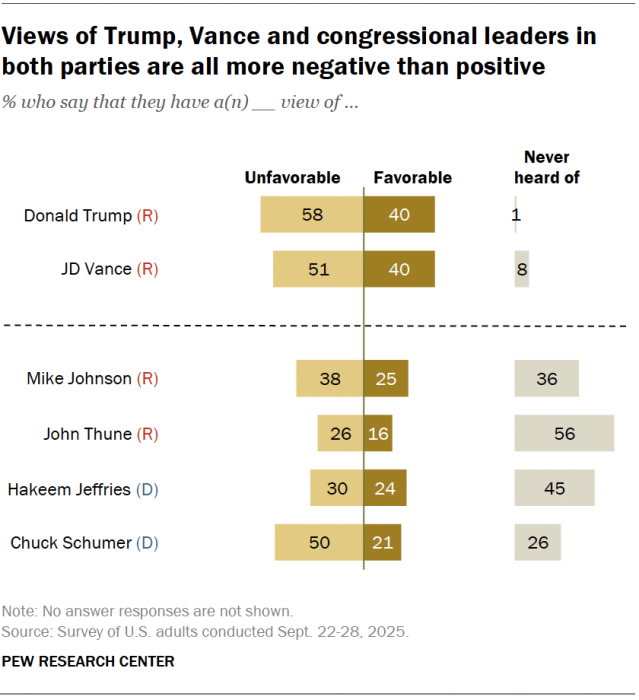
- 58% of Americans have an unfavorable view of Trump, while 40% have a favorable view. This is identical to his approval rating.
- 51% of Americans view Vance unfavorably, while 40% see him favorably. Another 8% say they have never heard of him.
The top congressional leaders in both parties are not as well-known as the president and vice president. But ratings of the Republican and Democratic leaders in the House and Senate are also more unfavorable than favorable:
Speaker of the House Mike Johnson, a Louisiana Republican, is seen unfavorably by 38% of Americans, while 25% view him favorably. More than a third (36%) have not heard of him.
Senate Majority Leader John Thune is the least known of the four congressional leaders: 56% of Americans say they have never heard of him. But more have an unfavorable (26%) than favorable (16%) view of the South Dakota Republican.
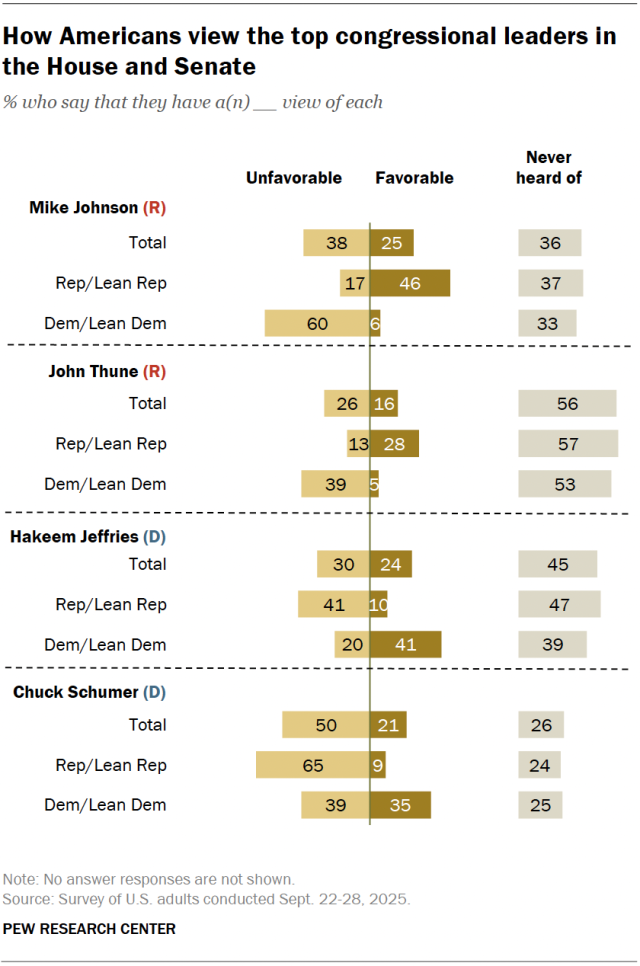
House Minority Leader Hakeem Jeffries is also not well-known, with 45% of Americans saying they have never heard of him. More have an unfavorable (30%) than favorable (24%) view of the New York Democrat.
Senate Minority Leader Chuck Schumer, also a New York Democrat, is the best known of the four congressional leaders, though he is viewed much more negatively than positively (50% unfavorable, 21% favorable). Around a quarter of Americans (26%) haven’t heard of Schumer.
While only modestly changed from earlier this year, views of all these politicians have ticked more negative since then.
Partisan differences in views of congressional leaders
Views of all four congressional leaders, as well as Trump and Vance, continue to differ widely by party. Partisans generally view their own party’s leaders more favorably than unfavorably:
- 46% of Republicans and Republican-leaning independents have a favorable view of Johnson, while 17% view him unfavorably.
- 28% of Republicans view Thune favorably, while 13% view him unfavorably.
- 41% of Democrats and Democratic leaners view Jeffries positively, while 20% see him negatively.
But Democrats are more critical of their Senate leader: 39% say they have a negative view of Schumer, while slightly fewer (35%) say they have a positive view.
Schumer’s rating among Democrats has grown substantially more negative over the last year. In May 2024 – when Democrats held the Senate and Schumer was majority leader – 47% of Democrats viewed him favorably, while 26% had an unfavorable view.
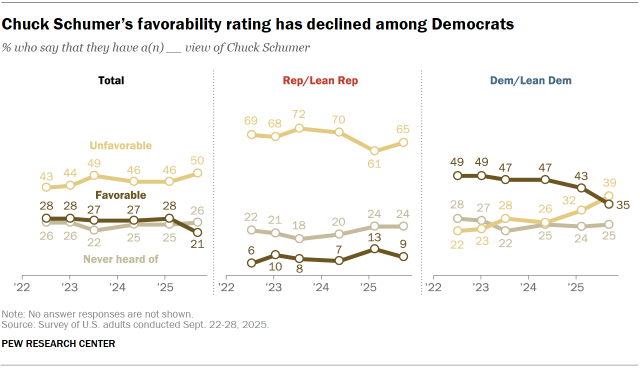
How Americans rate congressional leaders’ job performance
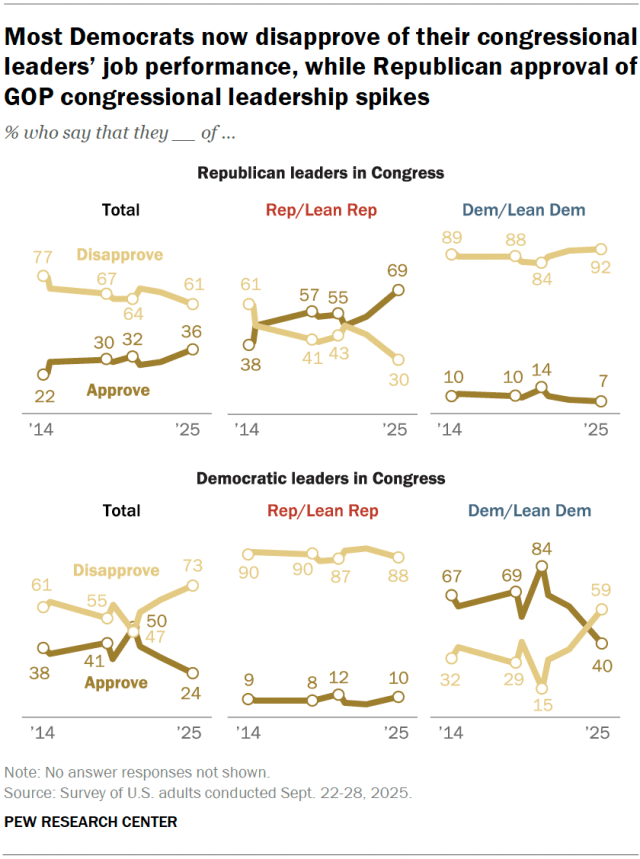
For the first time in more than a decade of Pew Research Center surveys on our American Trends Panel, more Democrats disapprove than approve (59% vs. 40%) of the job Democratic leaders in Congress are doing.
When we last asked this question in 2023, these figures were nearly the reverse. At the time, 61% of Democrats approved of their congressional leaders’ job performance, while 37% disapproved.
Attitudes have also shifted among Republicans. Today, 69% of Republicans approve of the job that GOP congressional leaders are doing – up from 54% who approved in 2023.
Donald Trump’s approval rating
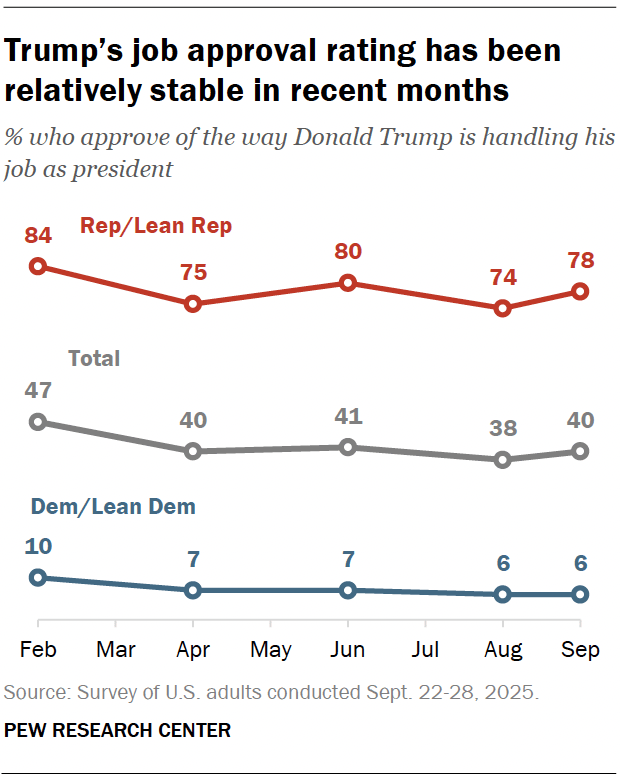
As of our September survey, Trump’s job approval rating stands at 40%. His approval rating has been relatively stable over the last few months. It is up slightly since August (38%) and on par with his rating in April and June.
About eight-in-ten Republicans (78%) now approve of Trump’s handling of the presidency. Just 6% of Democrats say the same.
Note: Here are the questions used for this analysis, the topline and the survey methodology.
